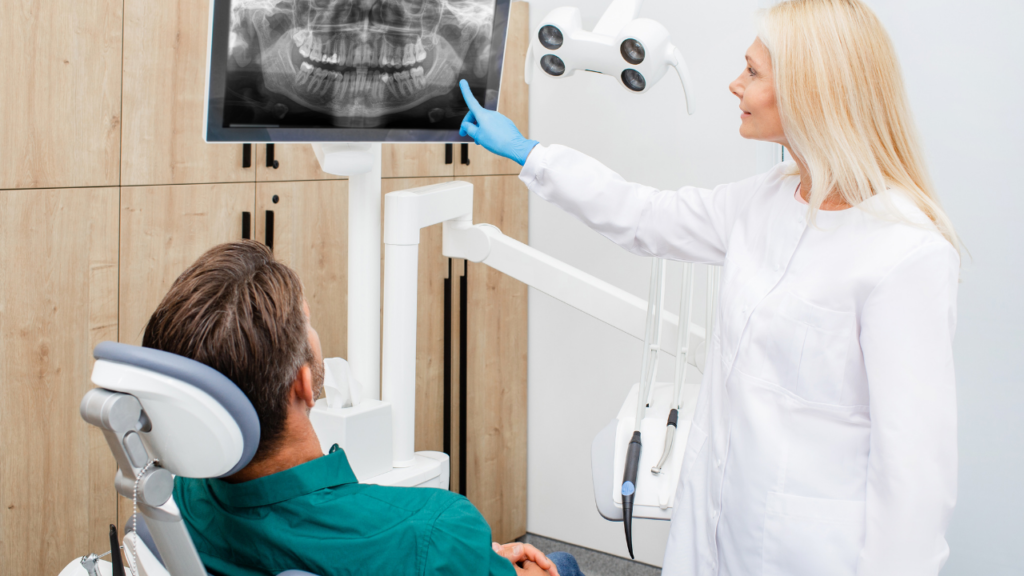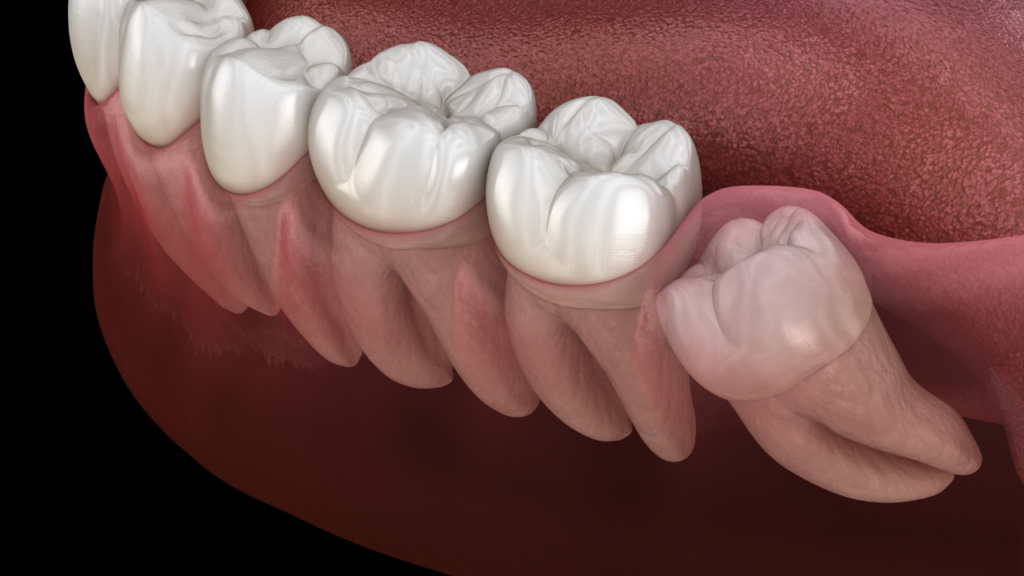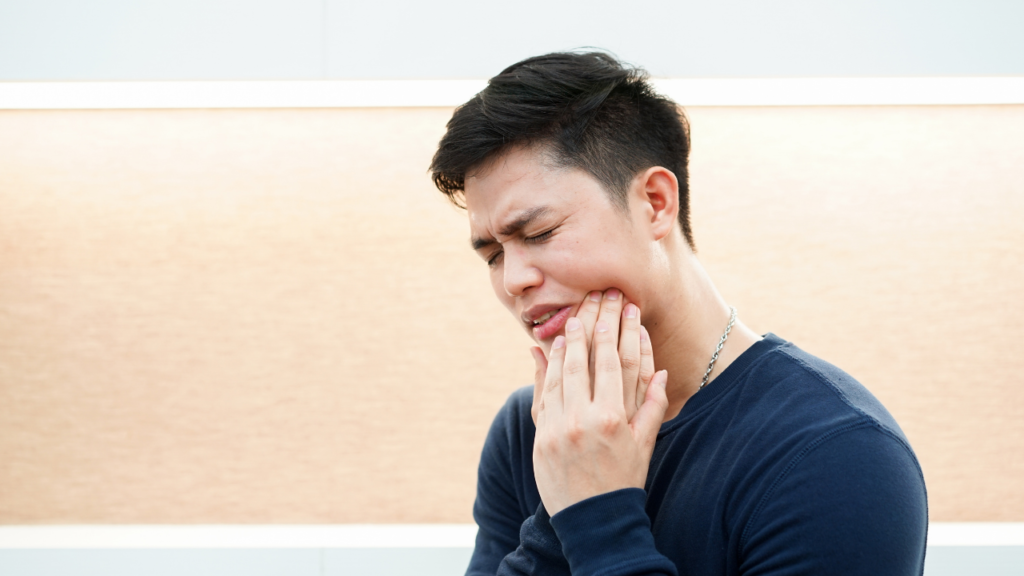Table of Contents
Exercise Daily – If your gum hurts where wisdom tooth was removed years ago, we can help with possible causes and treatments.
It is quite unusual to encounter complications as a result of a wisdom teeth extraction years later.
The most typical complication that happens after tooth extraction has healed is that a little bit of the tooth’s root that was mistakenly left behind begins to make its way out of the bone and soft tissue.
It has a comparable feel to a baby tooth erupting in the mouth. If a little bit of bone breaks off during extraction, it will become a foreign object that will work its way through the tissue without blood supply.
However, neither of these issues would ordinarily arise two years after the extraction but instead would occur immediately after the extraction.
What Should You Do If Your Gum Hurts Where Wisdom Tooth Was Removed Years Ago?
If you have any concerns, you should consult with a dental specialist who specializes in this type of procedure, ideally a periodontist or oral surgeon, and have him or her do a CT scan or Panorex on your teeth to determine the problem.
Not only should you take a picture of your teeth, but also of your jawbone. As a result, you will be able to rule out any infection, cyst, or other condition at the extraction site that may be causing the repeated swelling.
It’s probable that there’s a problem with the tooth that’s close to the extraction socket. It’s possible that the tooth has a cavity or that it requires root canal treatment, which would give the impression that it’s hurting the socket region.
Teeth are quite close together, and it is sometimes difficult for both the patient and the dentist to determine which tooth is causing the problem.
Why Are They Known as “Wisdom Teeth”?

The third molars are what your dentist may refer to as. Wisdom teeth, on the other hand, are those protrusions that emerge in the rear of your mouth between the ages of 18 and 24 that are known as “wisdom teeth” by the general public. Have you ever wondered how these teeth gained such a prestigious reputation?
This is another term that we acquired from the ancient Greeks, like so many others. They had three different names for these late-blooming teeth, but the one that was passed down to English was “sóphronistér,” which means “late-blooming tooth.”
This was in reference to the ability to exercise moderation and the act of instructing, both of which the ancient Greeks felt occurred later in life. Consequently, according to an old tradition, you get wisdom teeth at the same time as you begin to mature.
Wisdom teeth once assisted our forefathers in chewing through difficult foods such as roots and leaves.
If your gum hurts where wisdom tooth was removed years ago, you should first know the purpose of the wisdom tooth.
What Is the Purpose of Wisdom Teeth?
It is important to note that your teeth emerge in a sequential manner, with the molars arriving last. In most cases, your first set of molars appears around the age of 6, and your second set appears around the age of 12.
The final set of teeth, known as the wisdom teeth, takes far longer to develop than the rest of your teeth, and around one in every five individuals never receives them. It is possible that your ancestors played a part in this.
When it comes to wisdom teeth, Tasmanians are practically never affected, but indigenous Mexicans are usually always affected.
This appears to be attributable to a genetic abnormality that originally appeared in China more than 300,000 years ago and has since spread around the world.
Scientists believe that changes in the way we eat have affected the structure and function of our mouths as well as our teeth.
At one time, humans relied on a variety of meals that required extensive chewing to digest properly. In ancient days, it was believed that foods like roots, nuts, leaves, and meats were a significant portion of our diet.
We have knives and forks to help us with a lot of the “chewing” these days, and most foods are softer as a result. Our need for wisdom teeth has simply outgrown us, but that doesn’t prevent them from making an appearance when they’re not supposed to.
The term “impacted” refers to teeth that have not entirely emerged from the gum line.
Impacted Wisdom Teeth

Having a gum hurts where wisdom tooth was removed years ago can be related to an impacted wisdom tooth.
Occasionally, your wisdom teeth do not erupt (pop out of the gum line, as the medical phrase is) in the manner in which they should. When wisdom teeth erupt crookedly, pushing against or pulling away from neighboring teeth, they are referred to as “impacted.”
Estimates of the frequency with which new wisdom teeth are impacted are quite variable. Some studies have found that more than 70% of all new third molars are affected, whereas others have found that fewer than 40% of new third molars are affected.
Pain, inflammation, and infection can occur as a result of this condition, albeit this is not always true.
According to one study, around 12 percent of impacted wisdom teeth were associated with more significant symptoms.
It has long been believed that impacted wisdom teeth crowd other teeth, causing them to get out of alignment as a result.
It has been hypothesized, however, that because wisdom teeth emerge from spongy tissue near the jaw and lack solid support, they are unable to anchor and disturb the other teeth that are more securely established in the jawbone and bone structure.
Main Cause of Gum Pain After Wisdom Tooth Removal

Before jumping to the conclusion of your hurting gum, you should know what can be possible reasons behind it. Sometimes, the underlying issue is not what it looks like. It is possible that your gum may hurt because of some other reason.
So, let’s take a look at all possible causes of gum hurts where wisdom tooth was removed years ago:
Pericoronitis
Pericoronitis develops when the wisdom teeth do not have adequate space for emerging through the gums. As a result, the gums around the wisdom teeth may become inflamed and infected if the teeth only partially emerge.
Gum flaps may occur if wisdom teeth only partly emerge during the eruption process. These flaps are places where food can become stuck, and germs can grow, resulting in an infection and other health problems.
What Causes Pericoronitis?
When wisdom teeth only partly emerge, a condition known as pericoronitis can occur (break through the gum).
Known as an operculum, the soft tissue growth that forms around a partially erupted wisdom tooth is characterized by its shape. Bacteria can become entrapped behind the operculum in this manner.
This creates an opportunity for germs to access the area around the tooth, causing infection and swelling to develop.
Food debris, germs, or plaque, which is a bacterial film that forms on teeth after eating, can become trapped behind the gingiva, which is a flap of gum that surrounds the teeth.
If it remains there for an extended period of time, it might irritate the gums and cause pericoronitis. If the situation is extreme, the swelling and infection may spread beyond the jaw and into the cheekbones and neck as well.
So, Pericoronitis can be a cause of your gum hurts where wisdom tooth was removed years ago.
Risk Factors for Pericoronitis
You may be more susceptible to pericoronitis if you have the following factors:
- Being in your 20s
- An infection of the upper respiratory tract
- Stress on an emotional level
- Oral health issues
Acute symptoms of pericoronitis
The following are examples of acute symptoms:
- Pain
- Swelling of the gum tissue (accumulation of fluid)
- Pus discharge
- Trismus, often known as lockjaw (a condition in which you have trouble opening your mouth and jaw)
- Having difficulty swallowing
- Fever
- Appetite loss
- Infection
- Swollen submandibular lymph nodes in the neck
Chronic symptoms of pericoronitis
- Dull ache or slight discomfort on an occasional basis
- Having bad taste in your mouth
Pericoronitis Diagnosis
If your wisdom teeth have partially erupted, your dentist will inspect them to evaluate how they are coming in and whether they fully erupt.
In order to assess the alignment of the wisdom teeth, they may take an X-ray on a regular basis. The existence of a gum flap surrounding wisdom teeth will also be noted by your dentist, as will any other symptoms like swelling or infection that may be present.
Treatment for Pericoronitis
If you have pericoronitis, and your gum hurts where wisdom tooth was removed years ago, you should consult with:
- Pediatric dentists or pedodontists
- Endodontist
- Periodontist
- Prosthodontist
- Oral surgeon
Pericoronitis can be treated in several ways, including:
Irrigators and rinses for dental hygiene
If the pericoronitis is limited to a small region and has not spread, washing your mouth with warm salt water may be sufficient therapy.
Your dentist can wash away food particles or bacteria from your mouth, or he or she can administer an oral rinse. You’ll want to make sure that no food gets stuck between the gum flap and the teeth.
Painkillers
Pain medications such as aspirin, acetaminophen, and ibuprofen can be suitable to alleviate the discomfort. In addition, your dentist may provide you with a pain reliever.
Antibiotics
If your tooth, jaw, or cheek swell and feeling uncomfortable, you should see your dentist as soon as possible. You can use antibiotics to treat the infection if it is severe enough (usually penicillin, unless you are allergic).
Surgery to remove the operculum
Depending on how bad the pain and inflammation are or how frequently the pericoronitis recurs, it may be essential to have oral surgery to remove the gum flap or wisdom teeth.
Your dentist will be able to make the proper recommendation to an oral and maxillofacial surgeon based on your needs. You can treat Pericoronitis using a low-level laser to alleviate the discomfort and inflammation associated with the condition.
Extraction
If wisdom teeth are still not able to come in properly, you may need to have them removed through surgery.
Your dentist may propose that you have both your upper and lower wisdom teeth extracted in order to avoid your top wisdom tooth from biting into your gum and triggering infection in the process.
There can be some other possible causes of your gum hurts where wisdom tooth was removed years ago.
Other Possible Causes of Gum Pain
The gums are a soft, fleshy membrane that serves to support and preserve the teeth. Inflammation, infection, or damage to the gums and teeth can cause discomfort in gums and teeth.
You can treat the discomfort in the gums with over-the-counter medications, but in certain cases, dental treatment is necessary to prevent severe health concerns.
It is possible to have slight discomfort to severe and devastating gum pain. In addition to the above, there are several more probable reasons for gum pain.
Canker sores
This is a type of gum ulcer that is tiny and painful and can appear anywhere on the gums. In addition to mental stress and oral trauma, canker sores can result from immunosuppression or other medical problems that are present.
Cuts and bruises
It is possible for food and items that enter the mouth to cause small wounds or injuries to the gums and teeth at times. Another possibility is that a person will accidently bite down on their gums, which can result in discomfort and bleeding.
Gum disease
Gingivitis, often known as gum disease, is a disorder that arises when bacteria accumulate behind the gums, causing irritation and bleeding.
Unless treated, gingivitis can progress to periodontitis, which can result in the loss of one or more teeth. People who smoke have a larger chance of developing gum disease than nonsmokers do.
Gingivitis can be a cause of gum hurts where wisdom tooth was removed years ago.
Changes in hormone levels
Hormonal shifts, particularly during pregnancy, can cause swelling, discomfort, and bleeding in the gums, causing a person to have bad breath.
Using the wrong brushing or flossing methods
Too much brushing or flossing can cause the gums to bleed and become painful if done too frequently or violently.
Sinusitis
The sinus cavity might expand as a result of a bacterial or viral infection in the sinuses. Gum pain and toothache are common symptoms of sinusitis in certain individuals.
Abscess in the tooth
An abscess or pus-filled sac can develop in the root of a tooth as a result of a bacterial infection. Gum swelling and discomfort are common symptoms of tooth abscesses.
Their severity and potential for spreading to other sections of the body make it critical to seek treatment as soon as possible.
Gum Hurts Where Wisdom Tooth Was Removed Years Ago – 10 Home Remedies
Pain in gum can be a result of many causes, including wisdom tooth removal. You can use the following 10 home remedies for any type of gum pain:
Using salt water to rinse
On the burner, heat 1 cup of water until it is warm (not boiling — just warm), then pour into a chilled glass. To the heated water, add 1 teaspoon of salt and stir thoroughly.
Rather than swallowing the combination, swish it about in your mouth and spit it out into a sink.
The salt will significantly reduce the risk of bacteria development in your mouth as well as the reduction of bacteria on your gums, both of which may be contributing to the swelling.
In order to reduce swelling, you should rinse your mouth with warm salt water at least twice daily until it disappears.
Compress
To assist relieve discomfort, apply a hot or cold compress to the affected area.
For a hot compress, use the following:
Bring water to a temperature that is acceptable (not boiling). Soak a clean towel in hot water for a few minutes, then squeeze off the excess water.
Warm, moist towel to your face in the place where your gum pain is occurring and gently push it against your face (not directly to your gums).
For a cold compress, use the following:
You can use the same method described above to apply an ice pack wrapped in a clean towel as well.
Alternatively, alternate between heat and cold until any edema and irritation have subsided. Compresses shall help you with your gum hurts where wisdom tooth was removed years ago.
Herbal Poultice
You can use certain plants and spices to make natural therapies for gum inflammation and discomfort, such as turmeric.
Analgesic (pain-relieving) herbs such as clove powder and Spilanthes are both suitable. They have been around for a long time as an alternative to over-the-counter pain medications. A powdered anti-inflammatory plant such as turmeric may also be beneficial.
If you want to use this therapy, combine the powdered herb of your choice with a small amount of warm water until you have a paste.
Rinse your mouth out with water after you’ve applied the paste directly to your gums until the discomfort has subsided.
Make your own dental spray at home
You should dilute essential oils and use them as a spray. Use a tiny, clean spray container for this treatment, one that has never had any other substance placed inside of it.
Fill the container halfway with water, and then add roughly five drops of your favorite essential oils per ounce of carrier oil. Shake well before using and softly spritz on your gums as required.
Never use essential oils directly to the skin without first diluting them with a carrier oil, such as sweet almond oil, to prevent irritation. Additionally, you should not swallow essential oils. After that, swish it around with water and spit it out.
Natural pain-relieving, inflammation-reducing, and circulation-boosting effects are present in essential oils such as peppermint, oregano, and clove.
Homemade dental spray can be helpful for gum hurts where wisdom tooth was removed years ago.
Teabags
Make a tea by soaking a new bag of tea for up to 5 minutes in boiling water, just as you would normally do when making tea. Apply the tea bag straight to the aching gums for at least 5 minutes once it has cooled enough to touch.
Teas strong in astringent tannins, such as black tea, green tea, or hibiscus tea, should be suitable for this purpose. Alternatives include herbal teas that include anti-inflammatory herbs such as ginger or chamomile, which both have a long history of use.
To soothe, you can use anti-inflammatory herbs, and the tannins will absorb anything that causes irritation to the gums.
Now is a great time to stock up on black, green, hibiscus, ginger, and chamomile tea.
Oral anesthetic gels
Oral gels containing medication are available on the market. These contain both natural and synthetic chemicals that are effective in numbing and treating gum discomfort. Some formulations contain pain-numbing chemicals derived from plants such as clove or Spilanthes.
Orajel and Anbesol are two commonly available over-the-counter products. Follow the directions on the product’s box.
Pain relievers (over-the-counter)
Simple pain relievers, including nonsteroidal anti-inflammatory drugs (NSAIDs) such as aspirin, acetaminophen (Tylenol), and ibuprofen (Advil), can be effective in a pinch.
Consider this option if your pain is tenacious and none of the topical approaches listed above (or others) are helping. You can use them either on their own or in conjunction with topical home remedies for skin conditions.
If your gum hurts where wisdom tooth was removed years ago, you can take pain relievers.
Follow the dosing instructions on the bottle labels for the correct dose levels.
Clove Oil
Clove oil is another age-old home treatment that is suitable to treat sore gums and other oral health problems.
Because of its antibacterial characteristics, this essential oil can help to lessen the swelling in your gums as well as treat the infection that is causing them. It also has analgesic properties, which means it will relieve any pain you may be suffering in your gums.
You can use Clove oil combined with black pepper to reduce inflammation and discomfort. Experts also advised that you chew on cloves to relieve your pain.
Babul Tree Bark
This is a traditional cure for sore gums that have been around for a long time. Chewing the bark of the Babul (or babool) tree is an excellent remedy to keep your teeth clean and healthy.
This is due to the presence of antibacterial chemicals in babul bark, which is capable of killing the usual bacteria found in our mouths. You will get relief from the irritation causing by swollen gums after using this medication.
Baking Soda
Swollen gums are a common problem for many individuals, and baking soda is a popular home cure for treating them.
Baking soda, which has antiseptic and antibacterial properties, is excellent to treat the infection that is producing the inflammation. It also has the additional benefit of reducing gum irritation and soothing sensitive skin.
Brushing your teeth with baking soda can also help to reduce the swelling of your gums.
Gum Hurts Where Wisdom Tooth Was Removed Years Ago – FAQs
Can you get pericoronitis years after wisdom teeth removal?
Fortunately, after the removal of wisdom teeth, the likelihood of developing recurrent pericoronitis decreases dramatically.
Once the wisdom teeth have been removed, and the gum flap has been healed, it is extremely unlikely for a person to develop a recurrent infection. Patients’ dental health will significantly improve when they have recovered from the procedure in the long run.
Can wisdom teeth grow back years later?
No, wisdom teeth do not regrow after they have been removed from the mouth. The possibility of someone having more than the usual four wisdom teeth exist, though.
Supernumerary teeth are additional teeth that can grow after the removal of your original wisdom teeth. Doctors name it “supernumerary teeth.”
Why does it hurt where my wisdom teeth used to be?
It is possible that your wisdom teeth are growing in and causing you discomfort. They can cause discomfort, swelling, and irritation if they burst through the gums during the process.
Wisdom teeth develop in close proximity to surrounding teeth due to a lack of available space. Consequently, a lot of people complain about gum hurts where wisdom tooth was removed years ago.
Is Pericoronitis a gum disease?
Yes, Pericoronitis is gum disease. Because of a shortage of space in the mouth, wisdom teeth are frequently unable to erupt, resulting in a partially erupted tooth in most cases entirely. It also leads to Pericoronitis.
Why is my gum growing over my back tooth?
Gingival hyperplasia is a condition in which the gum tissue around the teeth grows excessively. A variety of factors might contribute to this illness, but it is frequently a sign of poor dental hygiene or a side effect of particular drugs used on a regular basis.
Why do my gums hurt in one spot?
If you have a soreness anywhere along the gum line, your gums may have pain in a specific area. This can occur as a result of the eating of hard or sharp foods, the development of a gum abscess, or the presence of an infection within the gums.
It is also possible for food caught between teeth to create pressure on the gums, and if this pressure is not relieved by flossing, it can result in gum discomfort.
Conclusion
As we discussed in this article that it is unlikely that your gum hurts where wisdom tooth was removed years ago. However, you can consult with a dental expert to look for underlying causes.
If you have some other home remedies to reduce pain in the gums, share them with all of us in the comments section below.
Note: If you want to use the above remedies, you should first consult with your dental specialist. For a better understanding of your gum pain, consult your dentist.








